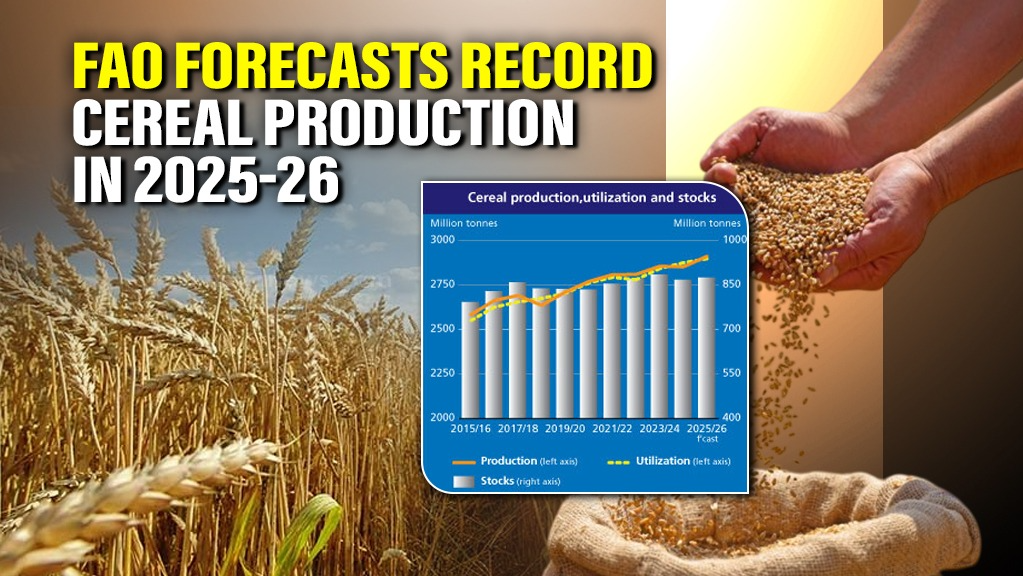

FAO Forecasts Record Cereal Production in 2025-26 after Current Season's Decline
The global cereal market experienced a downturn in trade and stock levels during the 2024/25 marketing year, primarily due to reduced maize production. However, a significant recovery is anticipated for the upcoming 2025/26 season, with the Food and Agriculture Organization (FAO) forecasting a new record for global cereal production, which should help stabilize supply and demand.
A Look at the 2024/25 Marketing Year
Global cereal production in 2024 was estimated at 2,853 million tonnes, a marginal decrease from the previous year. This dip was largely attributed to a reduced output of coarse grains, especially maize, which was not fully offset by modest gains in wheat and rice production. Simultaneously, global cereal utilization increased by 1.2% to 2,875 million tonnes, driven by higher consumption of maize, sorghum, and rice. With usage outpacing production, global cereal stocks are projected to end the season 2% lower than their opening levels, at 865 million tonnes. This tightening of supply was most evident in global cereal trade, which is expected to contract by a notable 6.9% to 478 million tonnes, led by a slowdown in wheat and coarse grain commerce.
Optimistic Outlook for the 2025/26 Season
The forecast for the 2025/26 season presents a more optimistic scenario. World cereal production is projected to reach a new record of 2,911 million tonnes, a 2.1% increase from 2024, with all major cereals—led by maize—expected to post gains. Global utilization is also expected to rise by a more modest 0.8%, reaching 2,898 million tonnes. As production is set to exceed consumption, total cereal stocks are forecast to see a modest recovery, rising by 1% to 873.6 million tonnes. Global trade is also projected to partially rebound by 1.9%, driven mainly by a 3.8% increase in wheat trade.
Despite the fluctuations between the current and upcoming marketing years, the overall global food supply situation appears balanced. The FAO projects the global cereal stock-to-use ratio—a key indicator of market comfort—to remain stable at around 29.8%. This suggests that while the 2024/25 season saw a tightening of supplies, the anticipated record harvests next year should ensure a broadly stable global food security outlook.